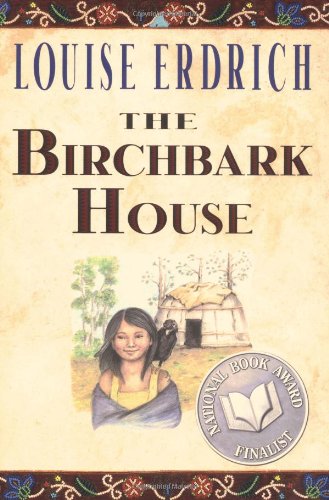
Erdrich, L. (1999). The Birchbark House. New York: HyperionBooks for Children.
Readability lexile: 970L
Summary:
An eight year old Ojibwa girl lives with her family in Minnesota around 1849. Omakayas does not have a blood tie to her family, but she does not know this. As a baby, she was the lone survivor of her people, all of whom died during a smallpox outbreak on Spirit Island. Old Tallow, an Ojibwa woman, rescued the surviving baby from Spirit Island and placed her with the couple Migwam and Yellow Kettle. In their home, Omakayas is a beloved daughter. The novel is organized into four sections, representing each of the four seasons, together creating a story that occurs within a year's natural cycle.
Evaluation of the text based on Donna Norton's characteristics of high quality literature (Norton, D. (2011):
This book could be used as high quality literature, because it serves for multiple avenues of learning. For example, in the back of the book it contains a author's note on the Ojibwa language and also a glossary and pronunciation guide of Ojibwa terms. This book could be used to teach students about the language Ojibwa. This book could also be used to teach about the seasons.
In the Ten Steps for Reviewing Children's Literature by Norton, this book is historically accurate and portrays the real life occurrences of indigenous people. This meets the requirements of high quality literature set forth by Norton.
Literary Elements:
1. Setting: The late 1800's.
2. Theme: A story about family, tradition, and how they live with the change in seasons.
3. Characters: Omakayas and the Ojibwa people.
Mini-Lesson:
The lesson I would teach is how to use Animoto to create a video using images, text, graphics, audio, and visual cues that reflect understanding of critical moments or a character/theme in the text. As a Reader Response for my EDU 333 class on Children's and Adolescent Literature and New Literacies, we were taught how to use it.
Animoto is a great website that you can use with your students for post reading activities. It is pretty easy to use, free, and much more engaging than a writing assignment. It involves students by allowing them to pick apart the book more in depth.
Here is the link to my Animoto video that I created for this book. I chose to create my video on the Ojibwa vocabulary.
https://animoto.com/play/wli9SBwhSPue1rt17G35XA
*ONLINE RESOURCE *
*ONLINE RESOURCE *
Target Audience: Grades 3 & up
My personal reaction to this book was that I had a hard time getting into it. I had a difficult time trying to interpret the Ojibwa vocabulary and I thought it started off slow. I am not much of a history fan either, so I was not as engaged in the reading as some of my classmates were.
The book was out of my comfort zone. I need to try and improve choosing books that I would not normally pick out and read. I need to broaden my horizon when it comes to choosing literature.
No comments:
Post a Comment